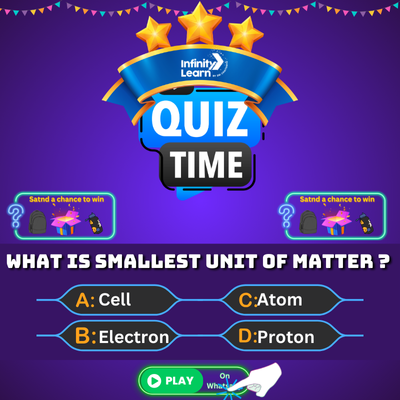Table of Contents
Application Programming interface is used to communicate and share data between two parties i,e. Client and the server. Let us know what is API full form and more about it in this blog.
If you are planning your career in tech or web development then being familiar with APIs (Application Programming Interface) is important. API is a simple application tool which is used by software applications to communicate with each other.
People generally use APIs when they need to fetch data from another website and hence it acts like a bridge connecting these two dots together. In this blog, we will learn more about APIs, their importance and applications.
What is an API (Application Programming Interface)?
The abbreviation API stands for Application Programming Interface. API is a messenger that allows two software applications to communicate easily without requiring you to know all of the messy details that are going on behind the scenes.
Consider API as an equivalent of a restaurant menu. When you enter a restaurant, you don’t go into the kitchen and start cooking your own food, right? Instead, you look at the menu, choose what you want, and inform the waiter.
The menu clearly indicates which dishes (services) are available and what you must provide, such as saying, “I want a pizza with extra cheese.” The kitchen then prepares it, and the waiter delivers it to you; you don’t have to know how they did it.
Most of you must be confused about how this example is connecting dots, like how they are even related but look at it this way in our tech world.
- Our app or program is like a restaurant customer.
- The API is the menu and the waiter combined.
- The server or system in the background is the kitchen.
Whenever our app requires some data, it orders it through the API. The API takes your request to the system, gets the data, and brings it back neatly.
API Full Form: Key Takeaways
- The API Full form is Application Programming Interface.
- API acts as an intermediary between an application and server sharing data.
- Most of the application nowadays provide users with API option which can be integrated or used on third party applications such as Whatsapp APIs, Google Map APIs, etc.
Example of API (Application Programming Interface)
Let us consider Whatsapp API, they are used by businesses to send messages, updates, notifications using whatsapp in bulk. For example, A travel company sends booking confirmation to all its users on Whatsapp. This is done using whatsapp APIs.
Whatsapp APIs offer two way communication, end to end encrypted messages, notification templates, and more. Another example is Google Maps API which helps applications, websites to embed and integrate maps and location on their platform easily.
How Exactly Do APIs Work?
Okay, let us get back to our restaurant example to understand APIs and their role. We already said the API is like a waiter or the menu. Now let us see exactly what steps are involved in bringing the dish after you place the order.
1. Make a Request, i.e., You Place Your Order: You tell the waiter; similarly, the app asks the API. Suppose the app sends a request to an API saying, “Give me the weather in New York” or “Show me my latest Instagram photos.” This request generally comes from the client side.
2. The API delivers Your Request to the Kitchen (The Server): The waiter does not make the food, instead they are the one who takes your order to the kitchen, where the real work happens. In the software world, the API takes your request and delivers it to a server or another application that has the data or functionality you need.
3. The Kitchen Prepares the Response (Development): The kitchen (server) cooks up your order just the way you want. Similarly, the Server processes your request, finds the right data or performs the required action, and gets everything ready. This is where your data is finally onboarded.
4. The API Brings the Response Back to You : When the order is ready, the waiter (API) brings it back to your table. In software, the API returns data to your app in an organized, ready-to-use format known as JSON, which is similar to a neatly packed food box.
What is the Importance of APIs?
Well, based on what we understood above, we can notice that APIs are a mediator between the server and the app. APIs are important because they save time, connect apps, make development faster, help businesses work together, and keep everything safe and smooth. Let us discuss some major important APIs and their roles in the tech field.
1. APIs Save You From Cooking Everything Yourself: API is the reason you can easily fetch information or data from a third party website and use it for executing a specific function that might be for your project or something else.
Without these APIs everyone will have to build every little function from scratch i,e. All by themselves. This would become a lot tedious and might affect the overall software development life cycle. With APIs you just have to connect with the source and it’s done.
2. They Make Apps Faster and Better: Application programming interfaces are like pre-made ingredients which can be used anywhere for any function based on requirement. There are many APIs available for numerous categories.
With APIs you do not need to build every little functionality of your application from scratch which saves time and even a lot of your resources too.
3. They Help Apps Talk to Each Other: APIs act as universal translators that help different apps and systems understand each other. For instance, your bank app can show your payment history from other services.
4. They Help Businesses Grow and Work Together: Big companies like Amazon, Google, Facebook, etc., offer APIs so other businesses can build on their services. This saves time for small developers. Also, this spreads their services everywhere and creates partnerships and new ideas.
5. They Make Things More Secure: APIs set clear rules on what data can be shared and how, like a secure window to pass information instead of letting someone walk into your kitchen.
APIs vs SDK vs Library: What is the Difference?
Well, APIs tell you what to do, SDKs give you everything you need to build it, and libraries give you ready-made code to make life easier. To get a better understanding, recall the previous example in mind.
- Think of API like a menu at a restaurant.
- Think of SDK like a full cooking kit.
- Think of a library like a pre-made batter.
| APIs vs SDK vs Library | |||
|---|---|---|---|
| API | SDK | Library | |
| What is it? | A way to talk to another system | A full set of tools to build apps | Pre-written code to help you |
| Analogy | Menu at a restaurant | Full cooking kit | Pre-made sauce or spice jar |
| Control | You follow its rules | You use its tools to build | You control how to use it |
| Contains? | Just rules & methods | Tools, APIs, libraries, docs | Just code functions |
What Is OpenAPI?
OpenAPI is a standard specification used to define and document the RESTful APIs into a machine readable format such as JSON. It helps developers to clearly convey what API does, its working, and how to use it which makes API development, testing and integration a lot easier.
OpenAPI was also known as Swagger Specification. It is used to define the structure of APIs including their formats, endpoints, parameters, methods, and more. It is like a blueprint for APIs acting like a bridge connecting both humans and machines to understand each other.
Some of the Common Misconceptions About APIs
APIs are not magic wands; they are helpful messengers that follow strict rules and make apps talk to each other, but they don’t do everything by themselves. Let us burst some of the common misconceptions one by one:
1. APIs are Only for the Developers: Yes, developers build and use APIs, but everyone benefits from them every day. Login with Google being one of the most common implementations and application of APIs.
2. APIs are Always Public: Not all APIs are publicly accessible to the world. There are Public APIs, Private APIs, and Partner APIs. Private APIs are only for internal use inside a company, whereas Partner APIs are shared with specific partners or clients.
3. APIs Store Data: APIs don’t store data themselves; they are just messengers. They take your request to a system or database, fetch data, and bring it back.
4. APIs Are Always Safe: APIs can have security flaws if not designed carefully. Developers must add authentication, rate limits, and other safety checks, just like putting a lock on your door so no one steals your food.
5. Using APIs Means No Coding: APIs make things easier, but still you need to write code to connect and handle responses properly. They don’t automatically build your app for you; they are more like ingredients you still have to cook.
API Full Form FAQs
What is the full form of API?
The full form of API is Application Programming Interface.
What does an API do?
An API allows different software applications to communicate with each other. It defines the methods and tools for building software and interacting with external systems or services.
Why are APIs important?
APIs are important because they enable software applications to interact seamlessly, exchange data, and integrate various functionalities, leading to a more efficient development process.
What are some examples of APIs?
Examples of APIs include the Google Maps API, which allows applications to integrate maps, and the Twitter API, which allows third-party apps to access and interact with Twitter data.
How does an API work?
An API works by receiving requests from a client, processing those requests, and then returning the requested data or action. It acts as a middleman between two systems, enabling them to communicate.
What are the types of APIs?
There are several types of APIs, including: Web APIs: Allow communication over the web (e.g., REST, SOAP) Library APIs: Allow access to a software library's functions Operating System APIs: Enable interaction with the operating system
How are APIs used in mobile applications?
In mobile apps, APIs are used to fetch data from external servers, integrate third-party services, or send information to back-end systems. For example, a weather app might use an API to get weather data from an online service.
What are RESTful APIs?
RESTful APIs follow the Representational State Transfer (REST) architecture. They use standard HTTP methods (GET, POST, PUT, DELETE) and are known for being simple and lightweight, making them popular for web and mobile applications.
What is the difference between an API and a Web Service?
While all web services are APIs, not all APIs are web services. A web service is a specific type of API that operates over the internet, often using XML or JSON for data exchange, while an API can be used for different purposes beyond web services.
Can anyone create an API?
Yes, anyone can create an API for their own system or service. APIs are typically designed by developers to allow third-party applications to access specific features or data in a controlled manner.
What does API stand for?
API stands for Application Programming Interface.
Are APIs safe?
APIs can have security flaws if not designed carefully. Developers must add authentication, rate limits, and other safety checks, just like putting a lock on your door so no one steals your food.
What is the importance of API?
APIs are important because they save time, connect apps, make development faster, help businesses work together, and keep everything safe and smooth.








